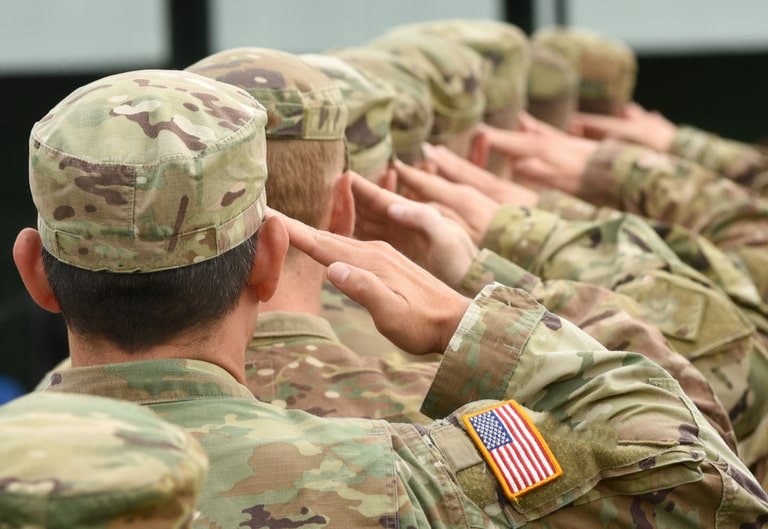By Mariano Aguirre, International Policy Analyst
The Trump administration has been very active in recent months promoting instability in the Middle East. Last October, president Donald Trump announced the withdrawal of 2,500 troops fighting in Syria alongside the Kurdish organizations of the People’s Protection Units (YPG) and the Kurdish-Arab alliance of the Syrian Democratic Forces (SDS). Washington has collaborated with this militia since 2015 in fighting the Islamic State.
In November, the White House declared that the United States does not consider Israeli settlements in the West Bank a violation of international law, a way to dismiss four decades of International Law statements on the occupation of the Palestinian territories, and to put an end to the two-state solution plan.
The first announcement opened the door for Turkish intervention in Northeast Syria and enabled the Bashar al-Assad regime to take over this region from the Kurdish militias. It also allowed Russia to play the role of broker between Damascus, Istanbul and the Syrian Kurds. Russian and Turkish troops (Turkey is a NATO member) are now patrolling together in Syria.
The Trump Administration provided conflicting explanations about this controversial withdrawal and the apparent protection of oil fields in Syria. A humanitarian crisis was on the rise, and European and regional allies, including Israel, were confused about Trump’s aims. This episode is a symbol of Washington’s long and contentious departure from the region.
The second announcement, warmly greeted by prime minister Benjamin Netanyahu, showed the complete alignment of the US with the Israeli strategic approach to Palestine.
Trump’s turn for the worst
President Barack Obama´s approach to the Middle East assumed that the US cannot control regional dynamics as in the past. Without losing its global leadership, the US should work with others in the multilateral system and avoid as much as possible being dragged into local armed conflicts. The use of force should be selective (e.g., drones in Yemen, special forces in Syria and Somalia).
Trump’s very different language has pursued the policy of a selective and cautious use of force. But instead of a conciliatory strategy, his presidency has promoted Washington alignment with Israel, Saudi Arabia, the United Arab Emirates and Egypt against Iran, and taken a series of decisions which are increasing volatility in the Middle East. This has not provided more leverage for the US in the region. Instead, it has shown an inability to understand complex regional dynamics.
Trump has recognised Jerusalem as the capital of the Jewish state, clearly contradicting UN resolutions and the international community’s position.
Trump has recognised Jerusalem as the capital of the Jewish state, clearly contradicting UN resolutions and the international community’s position; cut funding for the United Nations Relief and Works Agency for Palestine Refugees (UNRWA); and closed the diplomatic office of the Palestinian Authority in Washington.
In March 2019 Trump announced he would recognise Israel’s sovereignty over the Golan Heights that Israel occupied during the 1967 war. This recognition is fostering the interest of the Israeli Prime Minister Benjamin Netanyahu in incorporating the occupied West Bank into Israel.
All these measures have led to the serious deterioration of relationships with the Palestinians and sparked demonstrations that take place every Friday since April 2018 on the border that separates Gaza and Israel. Despite the peaceful nature of these demonstrations 180 Palestinians have died as a result of lethal Israeli fire and over 15,000 have been injured.
Promoting Iranian nuclear weapons
Moreover, Trump has removed the USA from the 2016 Joint Comprehensive Plan of Action (JCPOA) whereby the Iranian nuclear programme was subjected to international controls and has imposed sanctions on the country, contradicting its European allies, the UN, Russia and China, all of whom are signatories to the treaty. According to these sanctions, other countries cannot trade with Iran.
By leaving the JCPOA, Washington has legitimized Teheran’s production of nuclear weapons.
By leaving the JCPOA, Washington has legitimized Teheran’s production of nuclear weapons. After some months of being subjected to the boycott strategy of “maximum pressure” and insisting that the Europeans fully compensate Iran for the US sanctions that have been inflicted on the country, the Iranian government has decided to expand its stockpile of low-enriched uranium, resuming higher levels of enrichment and restarting centrifuge development. As a self-fulfilling prophecy, Saudi and Israeli Governments, and US hawks are pressuring Washington to attack Iran nuclear facilities.
As a self-fulfilling prophecy, Saudi and Israeli Governments, and US hawks are pressuring Washington to attack Iran nuclear facilities.
Another controversial decision was taken by Trump at the end of 2018 when he announced –despite recommendations not to from his own administration – the withdrawal of USA troops fighting the Islamic State in Syria. He claimed that the terrorist group has been defeated. Indeed, Daesh’ caliphates in Iraq and Syria have fallen, but its militant activists are present in a number of countries. Different sources estimate that the organization still has around 20,000 active members in Syria and Iraq, while the Pentagon counts around 17,000 in Iraq. Even worse, Syria and Iraq are releasing militant prisoners because they do not have the capacity to retain them in prison, and thanks to the US withdrawal, the Kurdish militias can no longer control the Daesh´ prisoners.
All these steps show a US in retreat from the Middle East.
An empire in retreat
After the Second World War, the USA inherited the UK, France and Italy’s colonial presence in the Middle East. Washington and London cooperated and competed during the transition. Saudi Arabia became the main ally in Washington’s strategy to gain access to oil and fight the Soviet Union during the Cold War. Since the 1960s, defending Israel has also become part of the strategy.
Since the 1960s, defending Israel has also become part of the strategy.
Currently, the USA’s diminishing influence in the Middle East includes measures that aggravate existing conflicts and lead other global powers and regions to push their agendas.
The USA’s withdrawal will not be immediate or complete, but is part of a tendency to draw back from the international arena: clashing with NATO members; leaving the Paris Climate Agreement and the Trans-Pacific Partnership; arguing with Europe and China over trade with Iran; and disagreements over customs tariffs and trade with Beijing – are all signs of an attack on the liberal multilateral system established after World War II.
This retreat is linked to America’s decline, the consequence, firstly, of grave internal problems: deep inequality, a crisis of political representation, social cohesion challenges, a lack of modernised infrastructures, and the list goes on. This decline is also the consequence of a combination of internal problems such as the economic, commercial military and technological rise of other states, particularly China.
London University Professor Emeritus Victor Bulmer-Thomas explains that the USA has been an empire since its foundation, first expanding through North America. From there it spread through the American continent, replacing European empires in other parts of the world. Washington generated different forms of domination and, when necessary, the use of force.
The American empire reached its peak of power after World War II, albeit not being entirely global due to the presence of the Soviet Union and its area of influence. The decline began when the internal crisis brought on by the Vietnam War erupted.
Obama was the first president who recognized the need to adapt US foreign policy to an international multipolar system. Trump perceives that things have changed, and flies the ‘America First’ flag, according to which defending the interests of the United States requires power politics and transactions (particularly with China) and resistance to the multilateral system.
So the USA leaves or opposes international agreements led by the United Nations (relating to human rights, the environment, gender, equality, race, migration and others fields) and instead creates sporadic alliances with (mainly authoritarian) governments with similar agendas, limits its participation (or leaves) multilateral organisations, and avoids intervening in armed conflicts. The USA will only use force as a last resort (without, of course, adhering to International Law restrictions).
Trump has also opted to oppose migration, vindicate the white race above multiculturalism, and fight back against family models and sexual choices that differ from the traditional moulds.
Weak political projection
In the Middle East, this global loss of credibility and influence is evident in the fact that although Washington maintains a strong military power, it no longer has the capacity to control political dynamics – often violent ones, based on national, ethnic and religious identities.
Turkey, Russia and Iran act in the region without the consent of Washington, while the Syrian opposition travels to Moscow to discuss the future of their country. Russia is improving its relationships with Egypt, Turkey, Saudi Arabia and Israel. Israel has a strong diplomatic relationship with Moscow and coordinates its regular attacks on Syria with the Russian military. Turkey is increasingly distant from Washington and NATO.
US military power does not necessarily imply political influence in countries that have diversified their relationships. The wars in Iraq, Syria, Libya and Yemen have followed their own courses and overtaken the United States.
The USA’s military presence in the region is still relevant. In October 2017 there were still 54,180 troops, supported by 22,000 private security workers. Some of the troops (around 9,000) are in Iraq, in military bases in Qatar and Bahrain, as well as in the U.S. Fifth Fleet. Washington also has Special Forces in several countries, technicians who cooperate since 2015 with the Saudi government on their air strikes on Yemen, and nuclear weapons in the Incirlik base in Turkey.
In the past twenty years, the USA has been and continues to be the main exporter of arms to the region, reaching 52 million dollars worth in 2017. Saudi Arabia is its main buyer. But this is no longer enough to influence local politics.
The need to control local politics and key geographical points (such as the Strait of Hormuz or the Suez Canal) has also decreased. The USA no longer depends on the large quantities of oil that it used to purchase from the region: now it produces it internally or buys it in other countries. From 2004 to 2007 it imported 12 million barrels per day; in 2017 it only imported 2.3 million. Besides, within the USA there is strong social and political pressure to reduce the consumption of oil and gas.
With regards to trade, imports from the Middle East to the USA have also fallen significantly. China has replaced the US as the main importer and exporter in the region. Gary Sick, ex-civil servant in National Security, summarises that ‘the truth is that our immediate interests in the Middle East, in terms of protecting USA territory, are very scarce. There is so much chaos in the region that things do not go better or worse if we are not there’.
Failure in Iraq, Palestine and the Arab Spring
The legitimacy crisis the USA is suffering in the Middle East can also be observed in a series of failures that started with the invasion of Iraq in 2003. Washington imposed an undeclared administration and protectorate, invested trillions of dollars, lost the lives of 4,700 American troops and created 32,000 war casualties. The country today is profoundly divided between the Kurdish, Shiite and Sunni communities, as well as the divisions amongst the Shiites themselves, and a great mistrust within a large part of Iraqi society of both their Government and the United States. The Sunni resistance, which in 2014 would become the Islamic State, was formed in precisely this climate of resentment.
David Gardner, from the Financial Times, considers the Iraq war the turning point at the end of the USA’s unipolar period (1991-2003). After Washington withdrew most of its troops in 2011, Shiite militias proliferated; thanks to Iranian weapons and training, they control part of the country’s security, politics and economy.
The next failure was Obama’s attempt to promote negotiations between Israel and the Palestine Liberation Organisation (PLO). Netanyahu’s systematic blocking of the attempt showed up Washington’s inability to pressure Israel – due to the power of the Israeli lobby in the USA and the inertia of decades of Washington’s unconditional economic, diplomatic, military and political support.
Meanwhile, the Arab Spring caught Washington off guard. After some initial doubts, Obama supported the peaceful opposition against Egyptian president Hosni Mubarak, allowing him to fall. This angered the governments of Saudi Arabia, the Gulf monarchies and Israel, allies of the Egyptian authoritarian regime, who then concluded that they could no longer count on the USA to defend them unconditionally. The initial support from Washington soon disappeared, but this did not fully reassure them.
In the case of Egypt, Trump has strengthened his total support for Abdel Fattah El-Sisi’s dictatorship and his strong repression of the Muslim Brothers and any opposition. This policy started during Obama’s presidency, who accepted military and judicial repression in Egypt. Egypt receives huge economic aid from Saudi Arabia and cooperates with Israel to fight insurgency in the Sinai desert and to retain almost two million Palestinians in Gaza.
The fracturing of Libya
Libya followed: Obama’s government reacting to the uprising against Muammar Gaddafi (2011) ‘leading from behind’, as the strategy was called, supporting a NATO military intervention promoted by France and the UK.
The operation to ‘protect civilians’ approved by the UN’s Security Council ended Gaddafi’s regime, but created multiple internal wars.
Neither the USA nor Europe had a plan for the post-war period, as Obama later admitted. The operation to ‘protect civilians’ approved by the UN’s Security Council ended Gaddafi’s regime, but created multiple internal wars, with hundreds of thousands of Libyan arms being illegally trafficked to the Sahel, increasing insurgency in the region. Russia considered that it was cheated by Washington in the Security Council.
Libya is now a violent fragmented state, a port for the trafficking and slavery of migrants heading towards Europe, and Washington has little influence in the conflict. On the contrary, other foreign actors are increasingly involved. Last April, general Khalifa Haftar (an ex dissident of Gadhafi’s regime, trained in the USA), led an uprising against Tripoli’s government of Fayez al-Sarraj, backed by the UN, the EU and the USA. During the initial hours of the offensive, Washington evacuated its Special Forces because the situation was becoming “increasingly complex and unpredictable”.
In June 2019, news came of the presence of several hundred of Russian mercenaries in Libya (and other African countries), belonging to the Wagner Group headed by Yevgeny Prigozhin, an obscure ally of president Putin. Also in Egypt, the United Arab Emirates, Sudan, Jordan and Turkey are providing Haftar with military support. But Moscow also maintains relationships with the Tripoli Government while al-Sarraj is complaining that the US has abandoned him. Moscow is interested in occupying geopolitical spaces in the Mediterranean and having access to natural resources in Sub-Saharan Africa.
The internationalized Syrian war
When the uprising against Al-Assad began, Obama stood his ground against national and international pressure to bring in the military. As Gardner states, the problem was not resisting intervention, but that the USA and some European countries “armed and subcontracted supremacist Sunni groups backed by the Gulf monarchies and Turkey. Consequently, Syria became a magnet for jihadists and reinforced the influence of local radical Islamists”.
On the other hand, following their interests and using the opportunity to replace the US, regional actors such as Israel, Iran, Saudi Arabia, Turkey, the Lebanese organisation Hezbollah have intervened. But the decisive external actor was Russia, which since 2015 has combined airstrikes with economic and diplomatic support.
Trump has continued the legacy of his predecessor. The USA decided to fight the Islamic State without combatting Damascus’ regime. In this way it allowed Moscow to become the strongest external player. President Vladimir Putin’s aims are to contain Islamist extremism that can spread to the Muslim population in Russia and its neighbouring countries, to establish alliances with regional powers, and to increase its sales of weapons, oil and gas.
Reviving complex alliances
Considering this proliferation of interests, the Trump administration is focusing on reinforcing the power triangle composed of Saudi Arabia, Egypt and Israel and adding other allies such as the United Arab Emirates, Bahrain and Jordan.
During his first trip abroad, Trump highlighted his alliance with Riyadh and signed contracts worth millions of dollars (that have not yet materialized) to sell them arms. When journalist Jamal Khashoggi was murdered in the Saudi Arabian Embassy in Istanbul in October 2018, the White House showed its loyalty by accepting crown prince Mohamed bin Salman’s version of the story (it seems that his prompting induced the crime).
In March 2019 Trump announced his intention to sell nuclear technology to Riyadh and authorised the sharing of confidential information relating to this field without the approval of the United States’ Congress. A decision like that will lead to proliferation in the area, where some governments have already expressed their interest in possessing this kind of weapon and will further weaken the Iranian agreement.
But while promoting the rearmament of the region, the White House is reluctant to use force. Three incidents have demonstrated this: the May 12 Fujairah port attack against four oil tankers in the United Arab Emirates; the June 20 downing of a U.S. drone; and the September attack on the oil facilities in Saudi Arabia. The US Administration accused Iran of being behind these, and made some show of force, but did not take use force against Iran.
This caution about the use of force is not accompanied by a policy of promoting dialogue among local actors, controlling the arms sales to the region and respecting the international agreement with Iran, among other possible actions. On the contrary, the alignment with Israel and Saudi Arabia, the confrontational approach towards Iran, the aggressive policy towards the Palestinians all ignite and deepen the existing crisis.
The alignment with Israel and Saudi Arabia, the confrontational approach towards Iran, the aggressive policy towards the Palestinians – all ignite and deepen the existing crisis.
Great plan for Israel-Palestine
President Trump promised in 2017 to put forward a “great plan” to solve the Palestine-Israel conflict. He chose his son-in-law, Jared Kushner to do this. In April 2019 Netanyahu made clear he has three conditions for Kushner’s plan: not dismantling a single Israeli settlement on the West Bank; Israel will maintain control of the territory to the west of the Jordan River; and Jerusalem will not be divided.
Kushner’s plan, elaborated jointly with Prince Mohamed bin Salman, would include Palestinians accepting limited autonomy in parts of the West Bank and renouncing their intention of having a new state. At the regional level, they planned an Israeli-Saudi alliance against Iran, the Muslim Brothers Hezbollah, Hamas, the Houthis and control of Lebanon.
But neither Saudi King Salman nor other Arab states have supported the plan. They also rejected the US decision about Jerusalem (particularly because Saudi Arabia is the custodian of the Al Aqsa mosque). For their part, the Palestinians rejected offers by Kushner to exchange their State demands for investments. Instead of a great plan, Washington had just followed what Israel wanted.
The future of the region in many hands
After decades of political, economic, diplomatic and military backing, Israel has become a power that can challenge and ignore the USA. During Obama’s presidency, Netanyahu initiated foreign policy measures that were completely independent from Washington, creating connections with Russia and China. Netanyahu’s government is building political and military alliances with the monarchies of the Persian Gulf and expanding Israel´s influence in Africa.
Mouin Rabbani, an analyst of Middle East issues, thinks that the USA’s political initiatives have been passed on to regional actors: “Netanyahu and the Saudi Arabian crown prince are the ones making the main decisions in the Middle East, with the support of Mike Pompeo, Secretary of State. It is not so much an inability as a lack of interest in impacting these dynamics”. None of the countries in the region nor any single foreign power have the capacity to define the future of the region alone. As regards Europe, Europe will be a secondary actor for as long as it continues to wait for the USA to take the lead.
Bulmer-Thomas raises the idea that the USA empire is falling and becoming (just) a nation-state. This can happen peacefully or as a confrontation with other powers, with or without internal ruptures. Rome, he states, disappeared when it stopped being an empire, but the United Kingdom, France, Portugal or Spain have survived as nation-states. As for the Middle East, the region has already seen other empires collapse: Ottoman, French, Italian, Russian and British. The American empire has not yet collapsed: but the path is mapped out.
Mariano Aguirre is an international policy analyst, with expertise on the Middle East, Latin America and US foreign policy. He was director of NOREF (Norwegian Center for Conflict Resolution) from 2009 to 2016.
Note: The views expressed in this article are the author/s, and not the position of Intellectual Dose, or iDose (its online publication). This article is republished from Open Democracy under a Creative Commons license.



